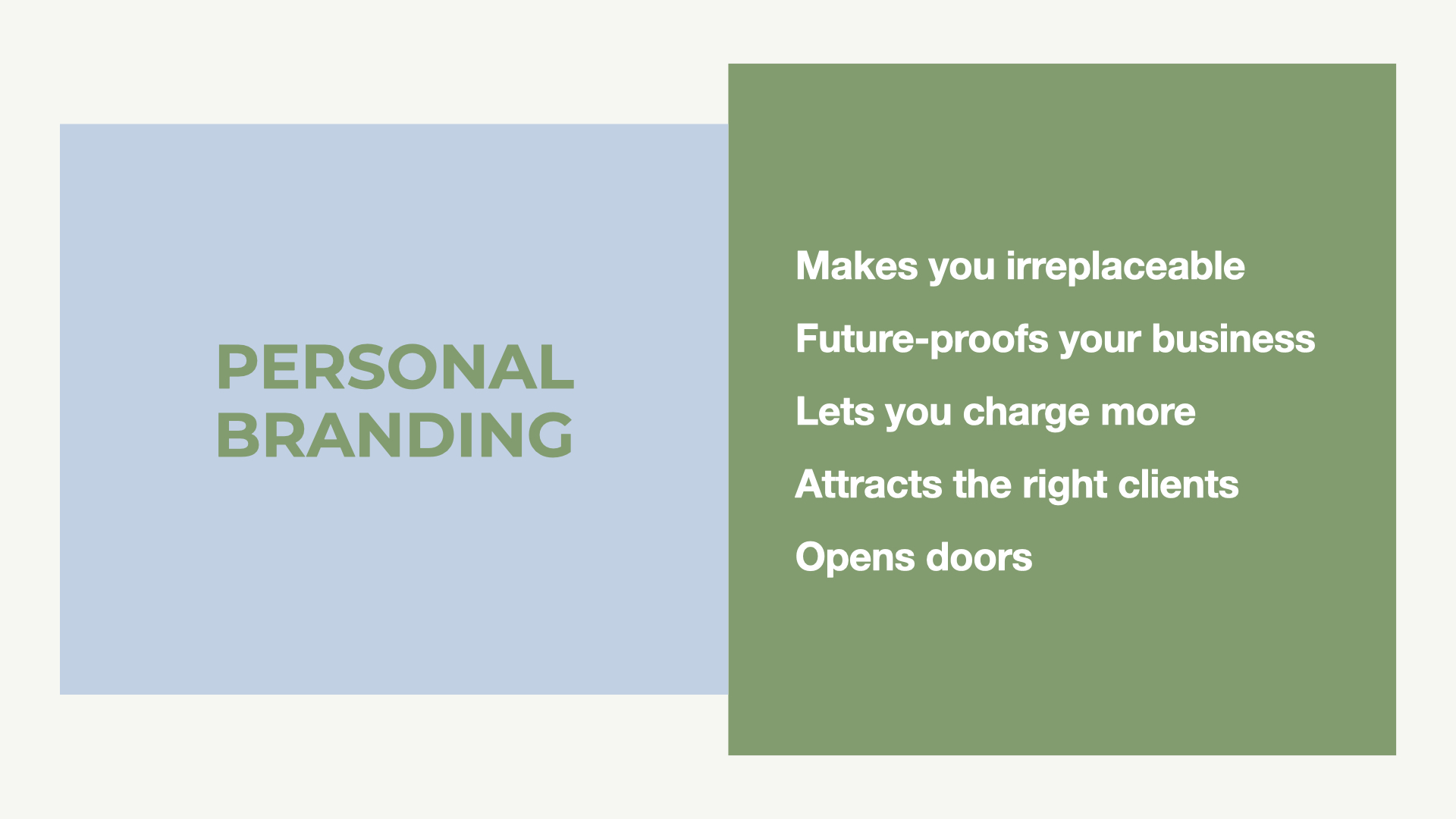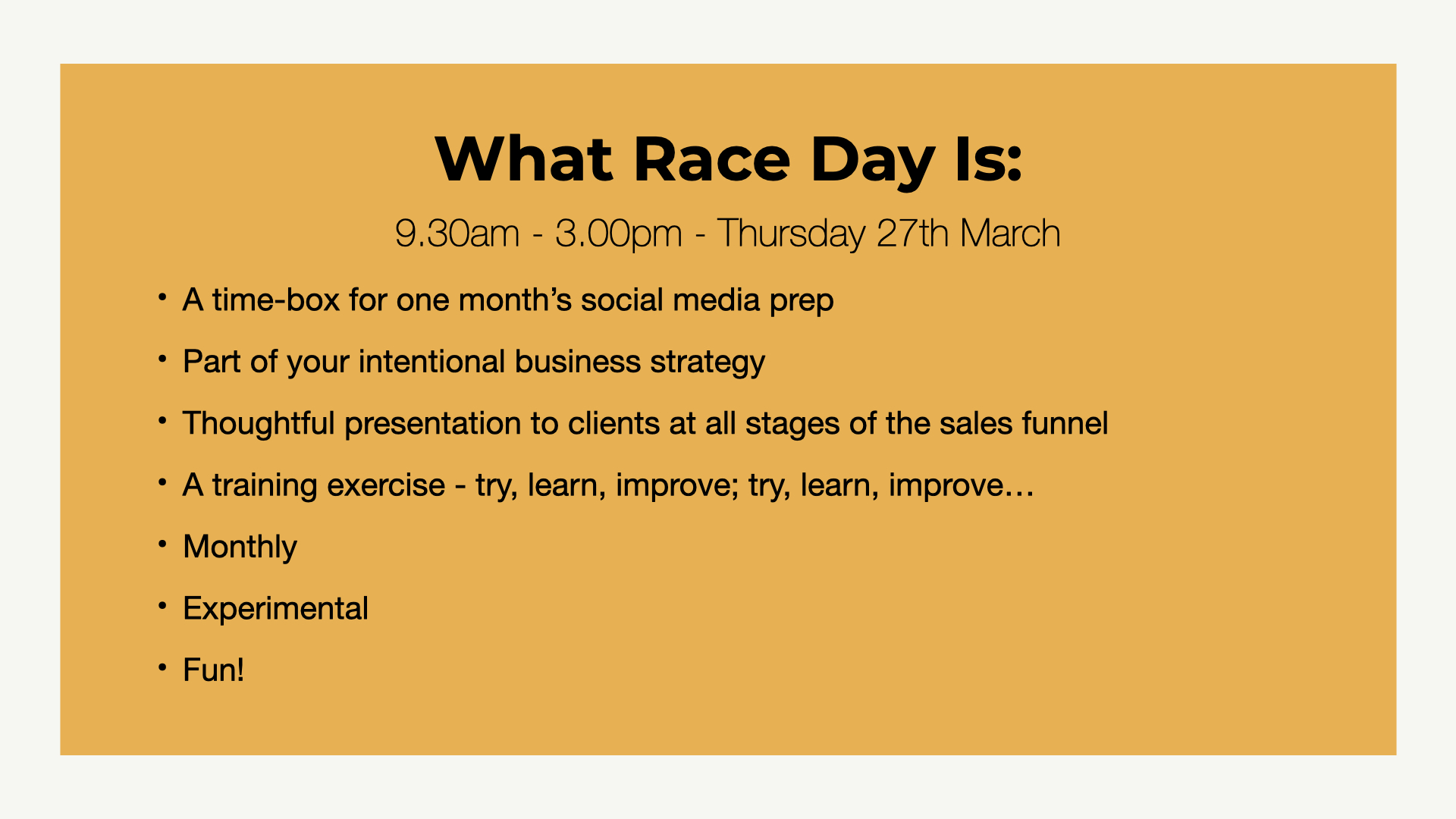
From Name to Brand: The Evolution of Personal Branding and Why It’s Non-Negotiable for Interior Designers
Mar 07, 2025Personal branding isn’t just a trendy marketing term, it’s one of the most powerful tools a residential interior designer can develop. Clients don’t just buy design services; they buy into a designer’s aesthetic, personality, and approach: people buy from people.
In an industry where taste, trust, and relationships drive sales, a strong personal brand isn’t a ‘nice to have’: IT IS ESSENTIAL!
How Personal Branding Became Essential for Interior Designers
The idea of personal branding has been around for decades. Tom Peters, in his now-famous 1997 essay The Brand Called You, was one of the first to argue that individuals need to market themselves with the same intention as businesses do. Since then, thought leaders like Seth Godin (Purple Cow), Donald Miller (Building a StoryBrand), and Marty Neumeier (The Brand Gap) have all reinforced the same core truth:
"Standing out is the key to success"
For service-based businesses like interior design, personal branding goes beyond logos and colour palettes. It’s about how you communicate your expertise, your values, and your unique way of seeing the world. This is what attracts the right clients: those who trust your vision and are willing to pay a premium for it. And that makes work so much more fun! You should enjoy your work.
The Science Bit: The Development of Theories of Personal Branding
Several influential frameworks help explain how to build a compelling personal brand.
PS - I THINK B & D ARE VERY POWERFUL FOR INTERIOR DESIGNERS ⏬️!
A. The Authenticity Principle (Kaputa & Montoya)
- Catherine Kaputa (You Are a Brand!) and Peter Montoya (The Brand Called You) emphasise authenticity as the foundation of personal branding.
- Clients seek designers who are genuine and relatable, not just skilled. A personal brand must be built around your natural strengths, personality, and values.
- Application for Interior Designers: Share insights into your creative process, your values, and why you design the way you do. Case studies, behind-the-scenes content, and personal anecdotes help build a brand that feels real.
B. The Archetype Branding Model (Mark & Pearson)
- Carol S. Pearson and Margaret Mark (The Hero and the Outlaw) explore brand archetypes, drawing from Jungian psychology.
- Every brand falls into one of 12 archetypes (e.g., The Creator, The Sage, The Caregiver, The Ruler).
- Application for Interior Designers: Identifying your brand archetype can help shape your messaging and aesthetic. For instance:
- A Creator archetype (artistic, expressive, boundary-pushing) might showcase bold, unique designs.
- A Caregiver archetype (warm, nurturing) might emphasise comfortable, liveable spaces.
- A Ruler archetype (luxury, prestige) might target high-net-worth clients.
C. The Visibility & Consistency Model (Keller & Neumeier)
- Kevin Lane Keller (Strategic Brand Management) and Marty Neumeier (The Brand Gap) highlight two critical personal branding pillars:
- Visibility – Your brand must be consistently seen across multiple touch points (website, social media, PR).
- Consistency – Your messaging, visuals, and tone should be aligned across all platforms.
- Application for Interior Designers: A polished website, cohesive Instagram feed, and regular thought leadership (blogging, speaking engagements, PR) reinforce brand identity.
D. Storytelling as Branding (Donald Miller)
- Donald Miller (Building a StoryBrand) emphasises using storytelling to create compelling brands.
- A brand should position the client as the hero and the service provider as the guide helping them achieve their dream outcome.
- Application for Interior Designers: Instead of focusing solely on personal achievements, frame your marketing around how you transform clients’ lives and homes.
Why Personal Branding Should Be Your Number One Marketing Activity

The most successful residential interior designers don’t just have a portfolio, they have a presence. A well-defined personal brand:
- Makes you irreplaceable – Clients want you, not just any designer. When your name carries weight, people seek you out and are willing to pay more to work with you.
- Future-proofs your business – AI-driven design tools are evolving fast. While AI can generate layouts, mood boards, and even entire design schemes, it can’t replicate human relationships, lived experience, or creative intuition. Designers with a strong personal brand - those who have cultivated a loyal audience - will have a significant edge as AI’s role in the industry grows.
- Lets you charge more – When clients believe in you, pricing becomes less about comparison shopping and more about whether they can afford your expertise. A well-known personal brand commands higher fees.
- Attracts the right clients – A clear, consistent brand message filters out those who don’t align with your approach while pulling in those who do. This means fewer difficult projects and more dream clients.
- Creates leverage for other opportunities – A personal brand extends beyond client work. It opens doors to collaborations, media features, speaking engagements, and product lines, income streams that wouldn’t exist without a strong identity.
The Blueprint: How to Build a Powerful Personal Brand as an Interior Designer
[HINT: We will be doing this during Race Day, and featuring it in 'how-to' in Hothouse]

1. Define What You Stand For
- What are your values? What’s your design philosophy? What do you want to be known for?
- Identify your brand archetype (The Creator, The Caregiver, The Ruler, etc.) to help shape your messaging and attract the right audience.
2. Show Up Consistently
- Your website, social media, and client communications should all reinforce your brand identity.
- Everything from the words you use to the projects you share should build a cohesive picture of who you are and why you’re different.
3. Use Storytelling to Connect
- Clients don’t just want to see beautiful images; they want to know the story behind them.
- Share your process, your challenges, your inspirations—this builds emotional engagement and loyalty.
- Use AI to help you refine the themes you'll share regularly (your branding content pillars) and suggest beguiling ways to communicate these - there is an example prompt for AI in Hothouse, under the 'files' tab.
4. Leverage Social Media as Your Stage
- Instagram, LinkedIn, and Pinterest are key platforms for interior designers. Use them intentionally to reinforce your brand.
- Post with a strategy: Race Day in Hothouse is designed to help you develop this skill and create an online presence that converts followers into clients.
5. Become the Go-To Expert
- Thought leadership (blogging, interviews, speaking gigs) establishes credibility and elevates your brand beyond just ‘another designer’.
- When clients see you as an expert, they trust your process and recommendations more, making projects smoother and more profitable.
Personal Branding Without the ‘Ick’: Rethinking Self-Promotion
For many designers - especially those raised with a British sense of modesty - the idea of building a personal brand can feel crass and uncomfortable. It can seem like self-promotion for self-promotion’s sake, an exercise in showing off. The fear of being seen as arrogant, or attention-seeking holds many back from fully embracing personal branding.

But here’s the truth: personal branding isn’t about bragging. It’s about clarity, credibility, and confidence. It's about sharing your huge enthusiasm for the transformational services you offer.
1. You’re Not Bragging About Yourself; You’re Advocating for Your Work
Your personal brand isn’t about saying, “Look at me! Aren't I fantastic!” It’s about saying, “This is what I do, this is why I do it well, and this is how I can help you.”
Think about the best designers you admire. Are they shy about sharing their work? Do they hide their process and hope the right clients magically find them? No. They confidently articulate their design philosophy, showcase their best work, and tell stories that connect with their audience. That’s not bragging - it’s just good business. Chances are, the best designers weren't very good at personal branding when they started, it's practice that has made perfect.
2. Your Clients Need to See Your Excellence to Feel Confident Hiring You
Interior design is a high-investment, high-trust service. Clients need reassurance that they’re choosing the right person. If you don’t tell them what makes you brilliant, how will they know? They aren’t mind-readers.
You’re not boasting, you’re giving potential clients the information they need to feel confident in their decision to work with you. That’s a service in itself. A clear, well-crafted personal brand makes their choice easier.
3. Personal Branding Isn’t About You...It’s About Your Ideal Client!
- Your brand helps potential clients understand what you stand for.
- It reassures them that they’re in safe hands.
- It communicates your experience, your taste, and the unique approach you bring to a project.
- It shares content that resonates with them: their fears, their hopes, their interests, their values.
If you’re not telling this story, someone else will. And that ‘someone else’ might not get it right. Worse, they might not even be aware of you at all.
4. If You Don’t Define Your Brand, The Market Will Do It For You
In a world of social media and online visibility, silence is not neutral. If you don’t actively shape your personal brand, people will make assumptions based on whatever limited information they can find. And those assumptions may not reflect your true value.
A personal brand lets you control the narrative, ensuring that your best work, strongest skills, and most valuable qualities are front and centre.
5. You’re Not Just Selling Design—You’re Selling Trust
At the heart of every great design project is trust. A personal brand, built with consistency and authenticity, builds that trust before a client ever picks up the phone.
If you frame personal branding as an act of service—helping your ideal clients understand you, trust you, and feel excited to work with you—it stops feeling like ‘showing off’ and starts feeling like exactly what it is: the foundation of a thriving business.
Race Day in Hothouse: The Fast Track to a Standout Personal Brand

In terms of appearing in your feed, or anywhere in the spotlight, the residential interior design industry is only just beginning the transition, we are in the 'messy middle'. It's ok not to be fantastic at it right now - everyone is learning. But, if you hesitate, if you don't make a start, you may fall behind. Now is the time to act.
Building a personal brand isn’t about waiting to be discovered—it’s about being proactive. Race Day in Hothouse is specifically designed to accelerate your visibility and help you stand out online. You’ll develop content that positions you as a leader, refine how you present yourself digitally, and ensure that potential clients see and remember you.
A powerful personal brand isn’t just about marketing, it’s about shaping how you’re perceived in the industry.
Here are some Insta accounts of designers who excel in personal branding:
Garden Designer Pollyanna Wilkinson
Polly's podcast partner Jojo Barr
Queen of the short snippet Kate Finch
The very lovely Charlotte Stuart
RACE DAY is a monthly live event, join Hothouse to find out more. Hothouse is free for all of 2025. Watch Here the first of two prep webinars, helping designers get ready for Race Day.
Stay connected with news and updates!
Join our mailing list to receive the latest news and updates from our team.
Don't worry, your information will not be shared.
We hate SPAM. We will never sell your information, for any reason.

